Abstract
We describe statistical thermodynamic theory for the lateral interactions among phospholipid head groups in monolayers and bilayers. Extensive monolayer experiments show that at low surface densities, PC head groups have strong lateral repulsions which increase considerably with temperature, whereas PE interactions are much weaker and have no significant temperature dependence (see the preceding paper). In previous work, we showed that the second virial coefficients for these interactions can be explained by: (a) steric repulsions among the head groups, and (b) a tilting of the P-N+ dipole of PC so that the N+ end enters the oil phase, to an extent that increases with temperature. It was also predicted that PE interactions should be weaker and less temperature dependent because the N+ terminal of the PE head-group is hydrophilic, hence, it is tilted into the water phase, so dipolar contributions among PE's are negligible due to the high dielectric constant of water. In the present work, we broaden the theory to treat phospholipid interactions up to higher lateral surface densities. We generalize the Hill interfacial virial expansion to account for dipoles and to include the third virial term. We show that to account for the large third virial coefficients for both PC and PE requires that the short range lateral attractions among the head groups also be taken into account. In addition, the third virial coefficient includes fluctuating head group dipoles, computed by Monte Carlo integration assuming pairwise additivity of the instantaneous pair potentials. We find that because the dipole fluctuations are correlated, the average triplet interactions do not equal the sum of the average dipole pair potentials. This is important for predicting, the magnitude and the independence of temperature of the third virial coefficients for PC. The consistency of the theory with data of both the second and the third virial coefficients extends the applicability of the head-group model to semiconcentrated monolayers, in agreement with the surface potential data in the foregoing paper.
Full text
PDF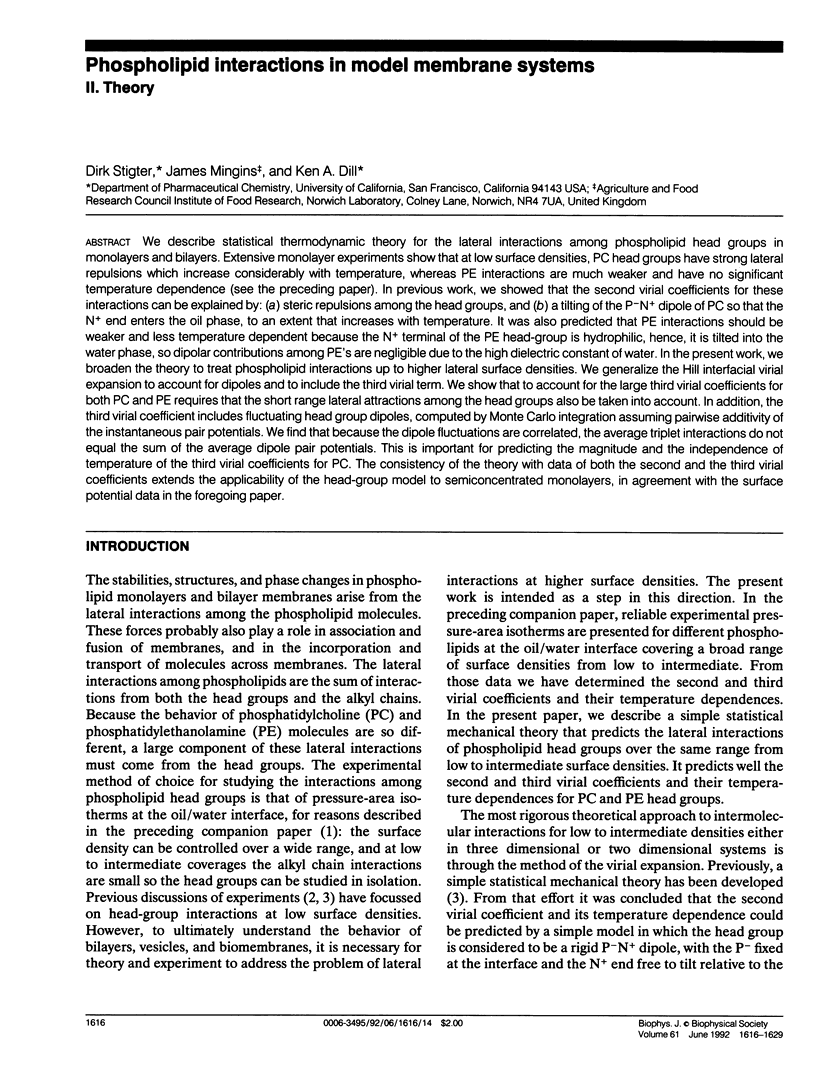


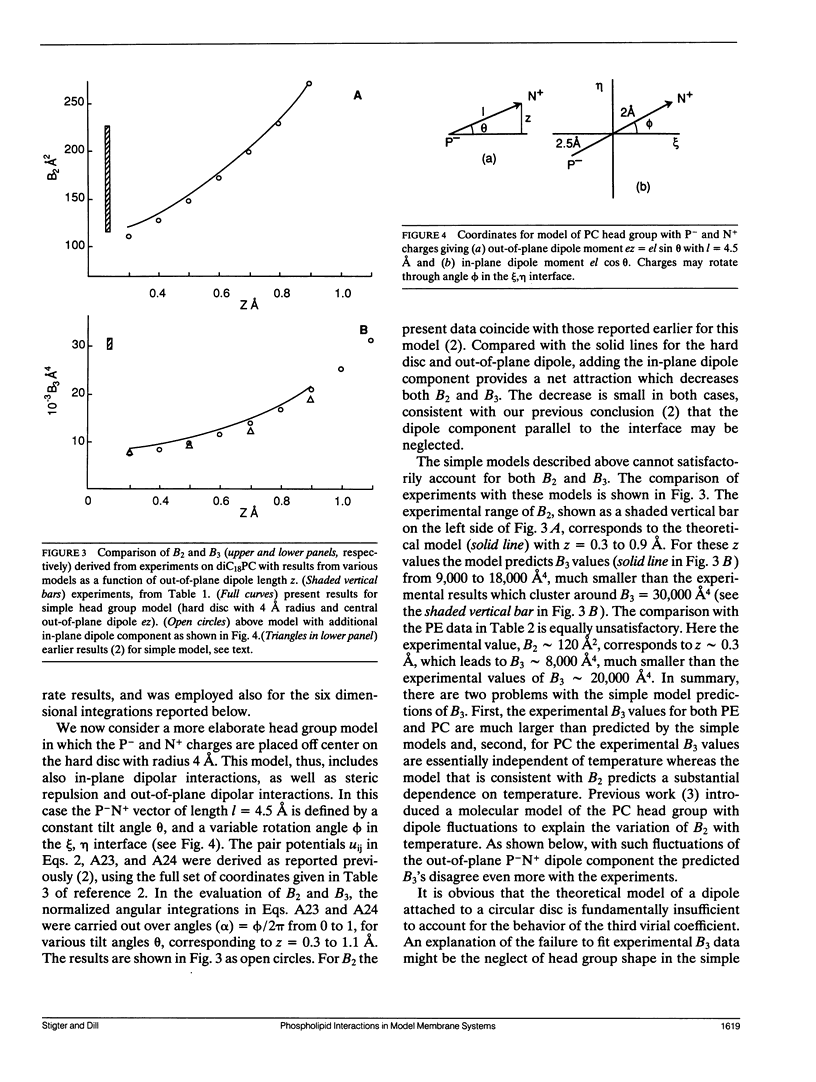
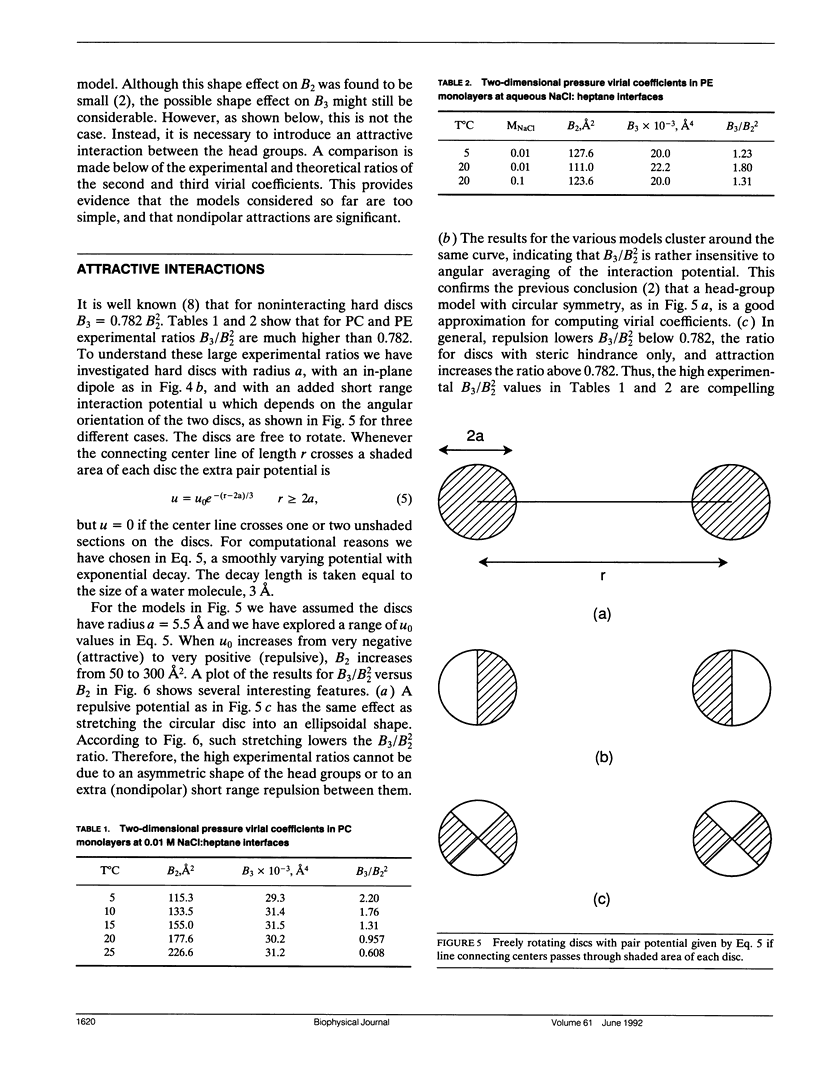
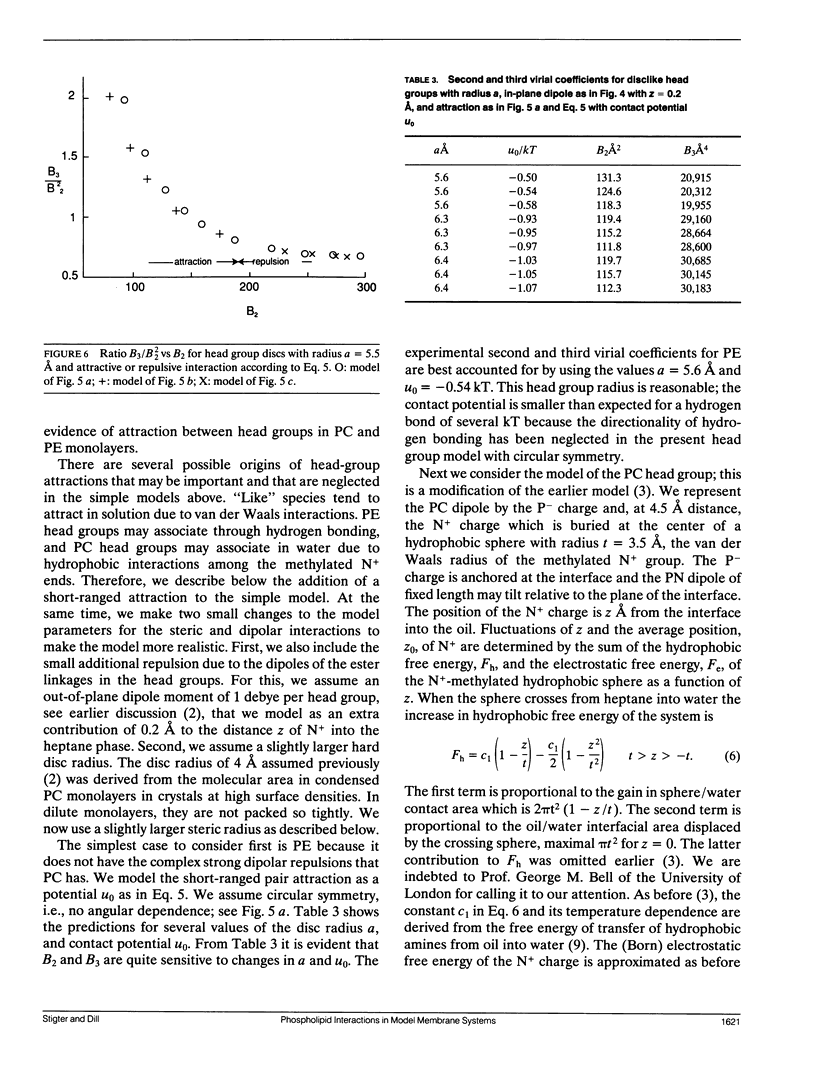

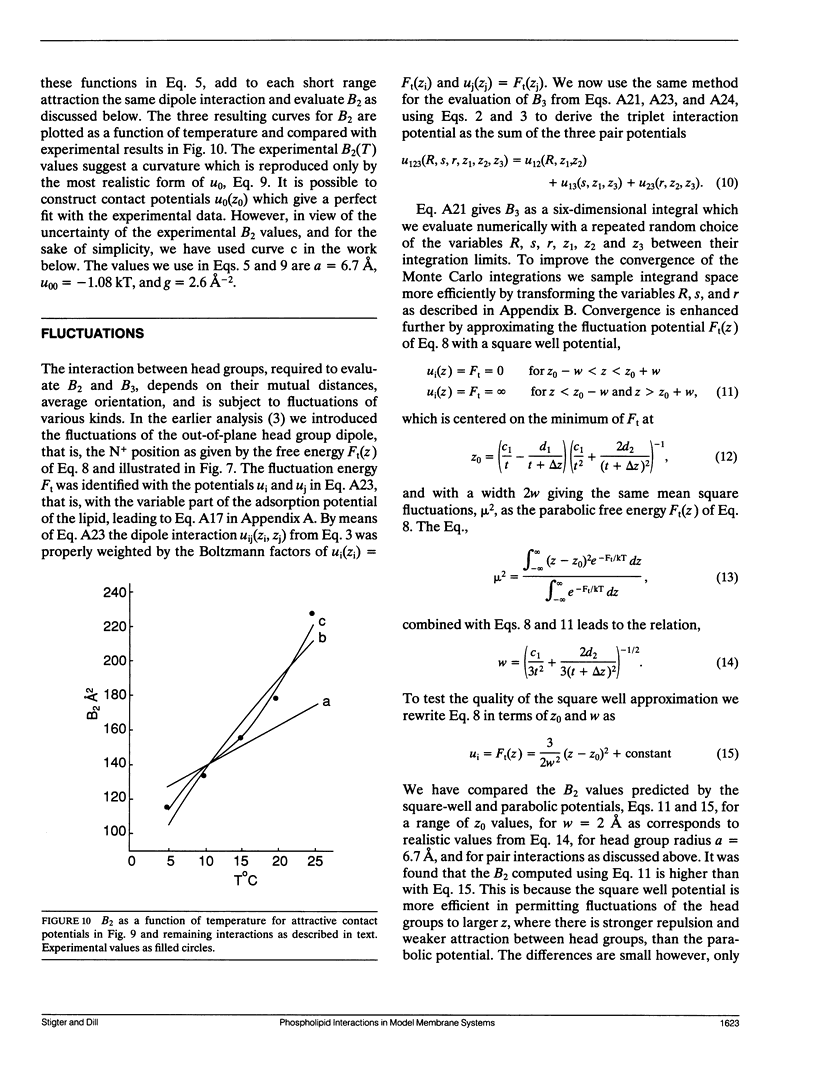

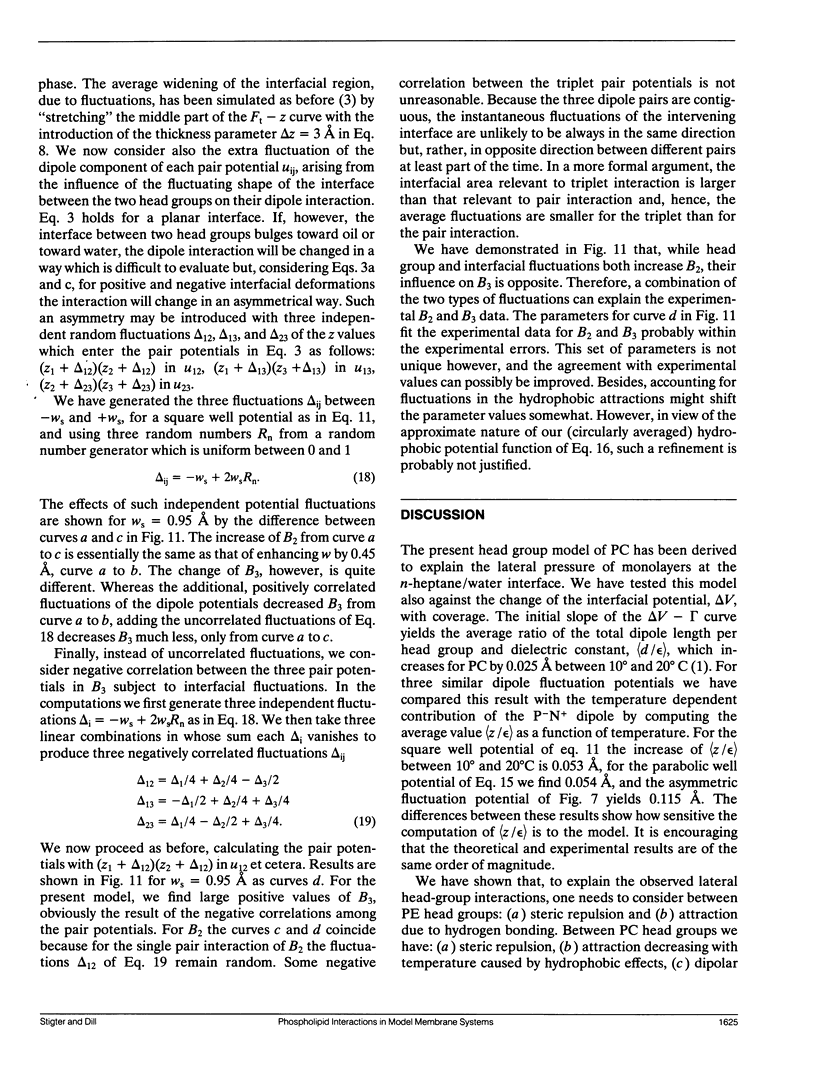
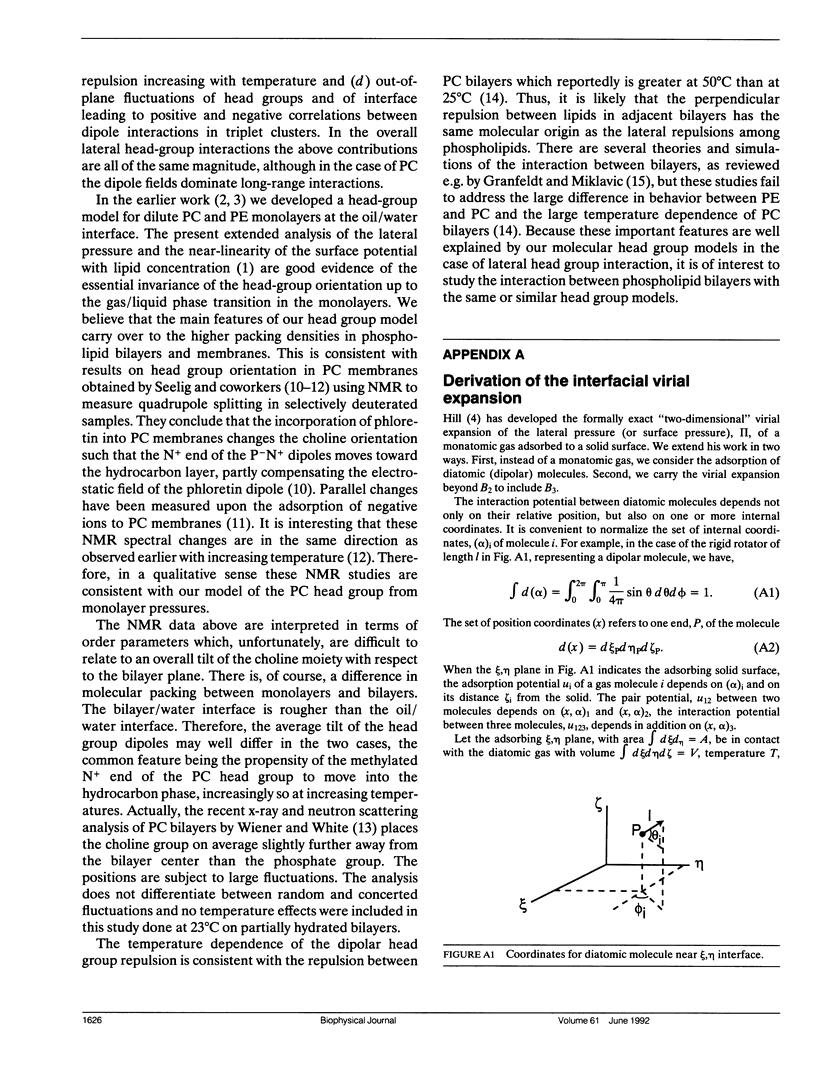
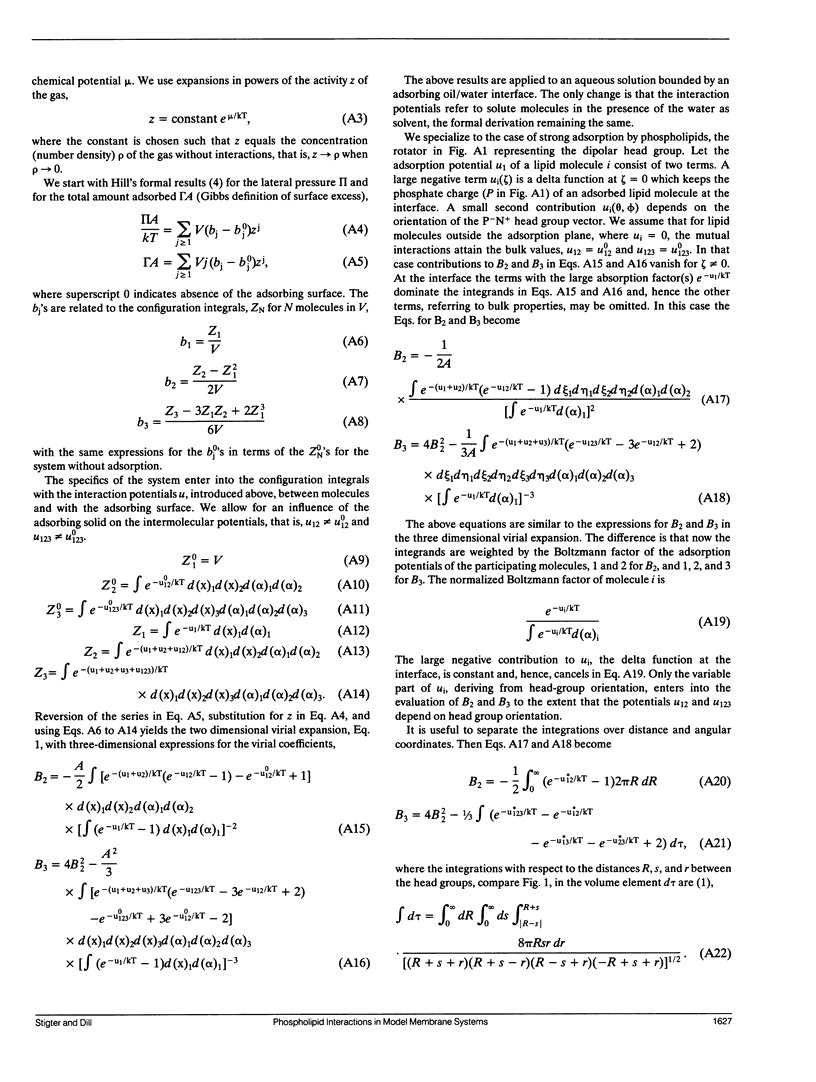


Selected References
These references are in PubMed. This may not be the complete list of references from this article.
- Bechinger B., Seelig J. Interaction of electric dipoles with phospholipid head groups. A 2H and 31P NMR study of phloretin and phloretin analogues in phosphatidylcholine membranes. Biochemistry. 1991 Apr 23;30(16):3923–3929. doi: 10.1021/bi00230a017. [DOI] [PubMed] [Google Scholar]
- Dill K. A., Stigter D. Lateral interactions among phosphatidylcholine and phosphatidylethanolamine head groups in phospholipid monolayers and bilayers. Biochemistry. 1988 May 3;27(9):3446–3453. doi: 10.1021/bi00409a048. [DOI] [PubMed] [Google Scholar]
- Gally H. U., Niederberger W., Seelig J. Conformation and motion of the choline head group in bilayers of dipalmitoyl-3-sn-phosphatidylcholine. Biochemistry. 1975 Aug 12;14(16):3647–3652. doi: 10.1021/bi00687a021. [DOI] [PubMed] [Google Scholar]
- Mingins J., Stigter D., Dill K. A. Phospholipid interactions in model membrane systems. I. Experiments on monolayers. Biophys J. 1992 Jun;61(6):1603–1615. doi: 10.1016/S0006-3495(92)81964-1. [DOI] [PMC free article] [PubMed] [Google Scholar]
- Rand R. P. Interacting phospholipid bilayers: measured forces and induced structural changes. Annu Rev Biophys Bioeng. 1981;10:277–314. doi: 10.1146/annurev.bb.10.060181.001425. [DOI] [PubMed] [Google Scholar]
- Scherer P. G., Seelig J. Electric charge effects on phospholipid headgroups. Phosphatidylcholine in mixtures with cationic and anionic amphiphiles. Biochemistry. 1989 Sep 19;28(19):7720–7728. doi: 10.1021/bi00445a030. [DOI] [PubMed] [Google Scholar]
- Wiener M. C., White S. H. Structure of a fluid dioleoylphosphatidylcholine bilayer determined by joint refinement of x-ray and neutron diffraction data. III. Complete structure. Biophys J. 1992 Feb;61(2):434–447. doi: 10.1016/S0006-3495(92)81849-0. [DOI] [PMC free article] [PubMed] [Google Scholar]


